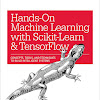Ability to Exist be Autonomous , Reactive, Goal-Oriented, etc.
- are the basic abilities of an Intelligent Agent
"Agent" can be considered as a theoretical concept from AI.
Many different definitions exist in the literature.
Agent Definition
An agent is an entity which is :
- Situated in some environment.
- Autonomous, in the sense that it can act without direct intervention from humans or other software processes, and controls over its own actions and internal state.
- Flexible which means:
Responsive (reactive): agents should perceive their environment and respond to changes that occur in it;
Proactive: agents should not simply act in response to their environment, they should be able to exhibit opportunistic, goal-directed behavior and take the initiative when appropriate;
Social: agents should be able to interact with humans or other artificial agents.
"A Roadmap of agent research and development", N.Jennings, K.Sycara, M.Wooldridge (1998)
American Heritage Dictionary:
agent-
"... one that acts or has the power or authority to act... or represent another"
"Intelligent agents continuously perform three functions: perception of dynamic conditions in the environment; action to affect conditions in the environment; and reasoning to interpret perceptions, solve problems, draw inferences, and determine actions."
Agent & Environments
The agent takes sensory input its environment, and produces as output actions that affect it.
Internal and External Environment of an Agent:-
Overall Intelligent Agent [Terziyan, 1993]
1) is goal-oriented, because it should have at least one goal to keep continuously balance between its internal and external environments ;
2) is creative because of the ability to change external environment;
3) is adaptive because of the ability to change internal environment;
4) is mobile because of the ability to move to another place;
5) is social because of the ability to communicate to create a community;
6) is self-configurable because of the ability to protect "mental health" by sensing only a "suitable" part of the environment.
Three groups of agents
Backseat driver: helps the user during some task (e.g., Microsoft Office Assistant);
Taxi driver: knows where to go when you tell the destination;
Caretaker: know where to go, when and why
Agent's Function Maps
- are the basic abilities of an Intelligent Agent
"Agent" can be considered as a theoretical concept from AI.
Many different definitions exist in the literature.
Agent Definition
An agent is an entity which is :
- Situated in some environment.
- Autonomous, in the sense that it can act without direct intervention from humans or other software processes, and controls over its own actions and internal state.
- Flexible which means:
Responsive (reactive): agents should perceive their environment and respond to changes that occur in it;
Proactive: agents should not simply act in response to their environment, they should be able to exhibit opportunistic, goal-directed behavior and take the initiative when appropriate;
Social: agents should be able to interact with humans or other artificial agents.
"A Roadmap of agent research and development", N.Jennings, K.Sycara, M.Wooldridge (1998)
American Heritage Dictionary:
agent-
"... one that acts or has the power or authority to act... or represent another"
"Intelligent agents continuously perform three functions: perception of dynamic conditions in the environment; action to affect conditions in the environment; and reasoning to interpret perceptions, solve problems, draw inferences, and determine actions."
Agent & Environments
The agent takes sensory input its environment, and produces as output actions that affect it.
Internal and External Environment of an Agent:-
Overall Intelligent Agent [Terziyan, 1993]
1) is goal-oriented, because it should have at least one goal to keep continuously balance between its internal and external environments ;
2) is creative because of the ability to change external environment;
3) is adaptive because of the ability to change internal environment;
4) is mobile because of the ability to move to another place;
5) is social because of the ability to communicate to create a community;
6) is self-configurable because of the ability to protect "mental health" by sensing only a "suitable" part of the environment.
Three groups of agents
Backseat driver: helps the user during some task (e.g., Microsoft Office Assistant);
Taxi driver: knows where to go when you tell the destination;
Caretaker: know where to go, when and why
Agent's Function Maps
The agent function maps from percept histories to actions:
Agents example
Human agent:
-eyes, ears, and other organs for sensors;
- hands, legs, mouth, and other body parts for actuators
Robotic agent
- cameras and infrared range finders for sensors
- various motors for actuators


























No comments:
Post a Comment